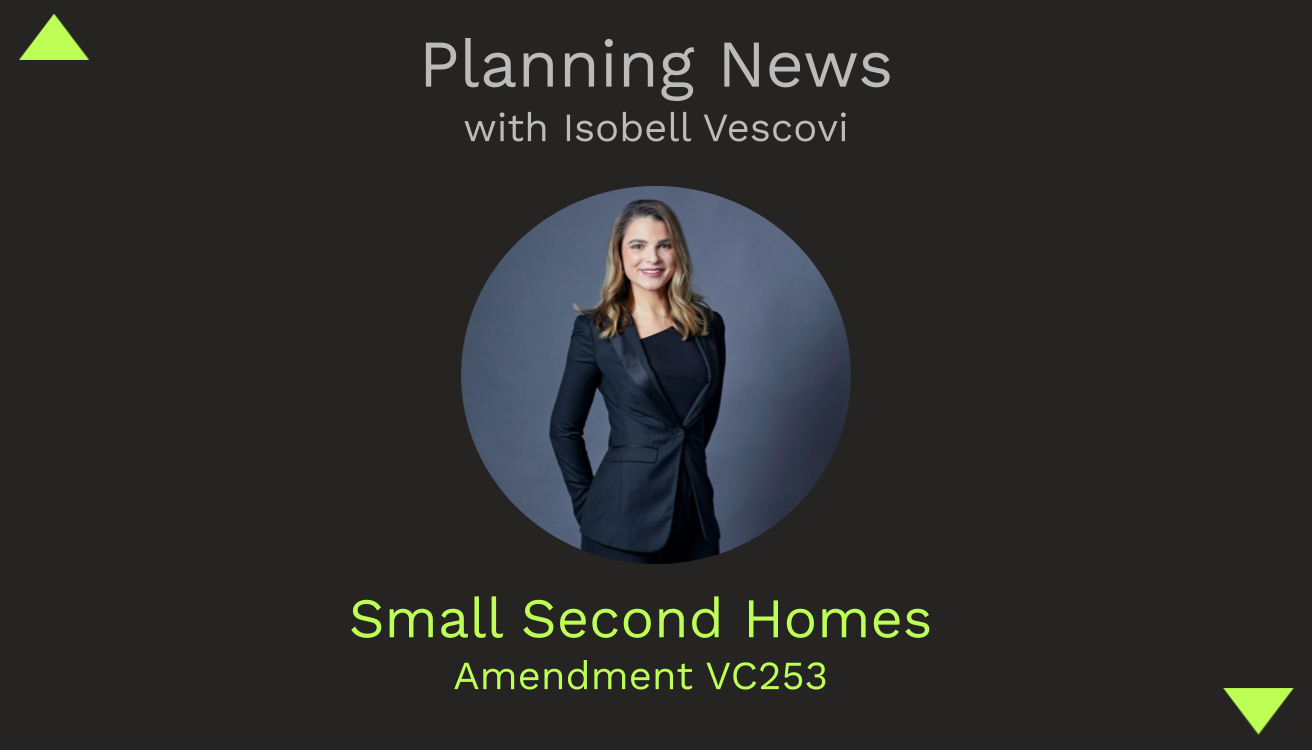
AMENDMENT VC253
SMALL SECOND HOMES ARE THE NEW BLACK
by Isobell Vescovi
It’s no secret that housing demand has continued to increase in Victoria over the past decade, with ever-relatable memes and stark news reports continuing to remind us how desperate the situation has become. Naturally, many people (not just the young) are looking for alternatives to the rental hellscape – but the question remains: How is Victoria going to provide more housing in established areas to fit Victoria’s estimated population of 10.3 million by 2051?
It turns out the answer may have been right there in the backyard the whole time: the granny flat. And, thanks to a new planning amendment, we could be seeing a lot more of these dwellings popping up in the not-so-distant future.
On 14 December 2023, Amendment VC253 introduced the concept of a small second dwelling. The amendment also introduced siting, design and amenity requirements for these small second dwellings, to make them (in theory) more accessible to many property owners.
Now, most small second dwellings won’t need a planning permit on lots larger than 300 square metres. You’ll still need a building permit, though.
Here’s a summary of what we know about the amendment so far.
How are small second homes classified?
To be classified as a small second dwelling, the building in question:
- needs to be on the same lot as an existing dwelling
- can’t exceed a gross floor area of 60 square metres
- needs to be used as a self-contained residence and must include the living essentials (a kitchen sink, food preparation facilities, a bath or shower, and of course a toilet and wash basin)
- needs to be connected to existing infrastructure or an onsite wastewater management system
- can’t be connected to reticulated natural gas supply.
Which zones won’t trigger a permit?
A permit is not required for a small second dwelling on a lot greater than 300 square metres in the following zones, if the above specified conditions are met:
- Mixed Use Zone
- Township Zone
- Residential Growth Zone
- General Residential Zone
- Neighbourhood Residential Zone
- Rural Living Zone
- Farming Zone
- Rural Activity Zone
- Urban Growth Zone.
Small second dwellings won’t require a permit under the Design and Development Overlay, Neighbourhood Character Overlay and Heritage Overlay, provided the building doesn’t exceed a height of 5 metres and is ‘finished using muted tones and colours’ (yes, you read that correctly!).
Which zones will trigger a permit?
A permit is still required for a second small dwelling on lots in the following zones:
- Green Wedge Zone
- Green Wedge A Zone
- Rural Conservation Zone.
How do you apply?
A small second dwelling will now be a class of VicSmart application if the above specified requirements are met within the following zones:
- Clause 32.04 (Mixed Use Zone)
- Clause 32.05 (Township Zone)
- Clause 32.06 (Rural Conservation Zone)
- Clause 32.07 (Residential Growth Zone)
- Clause 32.08 (General Residential Zone)
- Clause 32.09 (Neighbourhood Residential Zone).
If your land is also affected by Clause 42.01 (Significant Landscape Overlay), you can apply for a small second dwelling as a class of VicSmart application.
Otherwise, it’ll be through a regular planning permit application process.
How about setback requirements?
Building setback requirements for a small second dwelling will apply in the following zones:
- Clause 35.03 (Rural Living Zone)
- Clause 35.04 (Green Wedge Zone)
- Clause 35.05 (Green Wedge A Zone)
- Clause 35.06 (Rural Conservation Zone)
- Clause 35.07 (Farming Zone)
- Clause 35.08 (Rural Activity Zone).
A few other good things to know…
- Small second dwellings will be exempt from the car parking requirements of clause 52.06.
- Transitional provisions for a dependent person’s unit are now in place.
- Once the second dwelling has been approved, a permit cannot be granted to subdivide the land.
- If your land is subject to a restriction on Title that prohibits a small second dwelling, these restrictions will continue to apply.
Every council in Victoria will be required to meet targets for new housing under the State Government’s plan to increase the supply of homes and increase densities over the next 30 years.
We welcome this Amendment and the others that the Minister has foreshadowed to address housing affordability and supply in Victoria.

If you have any questions, get in touch at info@upco.com.au
